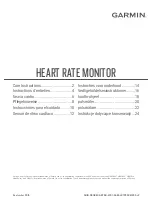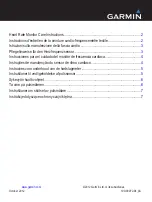
Chapter 6
Configuration
36
Daemon
is installed, it is possible to use the standard port
80
— then it will be no
longer necessary to specify the port in the browser, when connecting to the WWW
interface of
Kerio NetworkMonitor
.
Accept ’X-Forwarded-for’ tag...
This option enables the
Kerio Network Monitor
to get
the IP addresses of the client computers from the
X-Forwarded-for
tag in the HTTP
request, which was accepted by the embedded WWW server from the proxy server.
Set this option in case that local computers use a proxy server for the Internet ac-
cess. In this configuration
Kerio Network Monitor
“sees” only the requests from the
proxy server. In the
X-Forwarded-for
tag (which is added by the proxy server), it is
possible to find the IP address of the client — the real originator of the HTTP request.
Enter the IP address of the proxy server, which should
Kerio Network Monitor
accept
the
X-Forwarded-for
tag from (it can not be accepted from any proxy server, be-
cause this feature could be misused by the clients easily) to the appropriate field.
If the proxy server is running on the same computer as the
Kerio Network Monitor
Daemon
, use the loopback address
127.0.0.1
.
The above described problem can be solved by setting the WWW browser so that
it does not use the proxy server for local address (but this option can usually be
changed by the users).
The following options define the behavior of the WWW interface if it is opened by the
anonymous user (i.e. is not logged in with the user name and the password — see
chapter
8.1
).
The default setting supposes that each user can view only information about his own
computer (that, which is he connected to the WWW interface from). If the user has
appropriate access rights to
Kerio Network Monitor
(i.e. has created the user account —
see chapter
6.3
), he can log in and see all the information, which
Kerio Network Monitor
offers.
Show ’All computers’ item
The option
All computers
will be shown in the list of the
computers (i.e. show the statistics for all of the computers, logged by
Kerio Network
Monitor
).
Groups visible
Option determining, which groups can be seen by anonymous users (
No
groups visible
— no groups,
Groups I’m in
— only the group, which the computer, that
is connected to the interface, belongs to or
All groups
— all groups).
Computers visible
This option determines, which computers can be seen (
No comput-
ers
— no computers,
Only my computer
— only the computer, which he is connected
from or
All computers
—all computers).
Summary of Contents for Network Monitor
Page 1: ...User s Guide Kerio Technologies...
Page 8: ...Chapter 2 Quick Checklist 8...
Page 14: ...Chapter 3 Technical Information 14...
Page 18: ...Chapter 4 Installation 18...
Page 40: ...Chapter 6 Configuration 40...
Page 66: ...Chapter 8 Web Interface 66...
Page 70: ......
















































